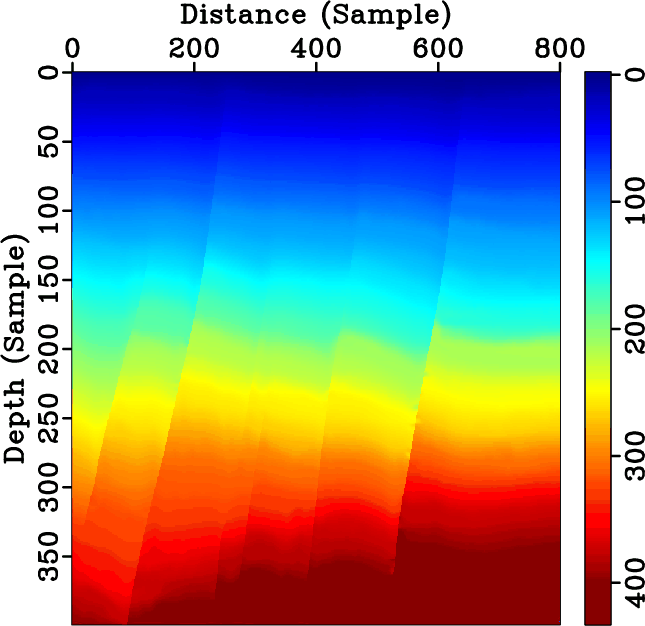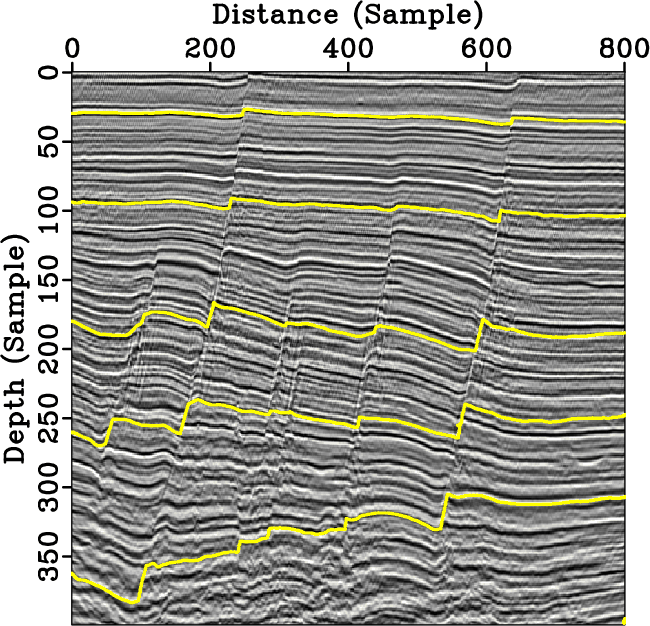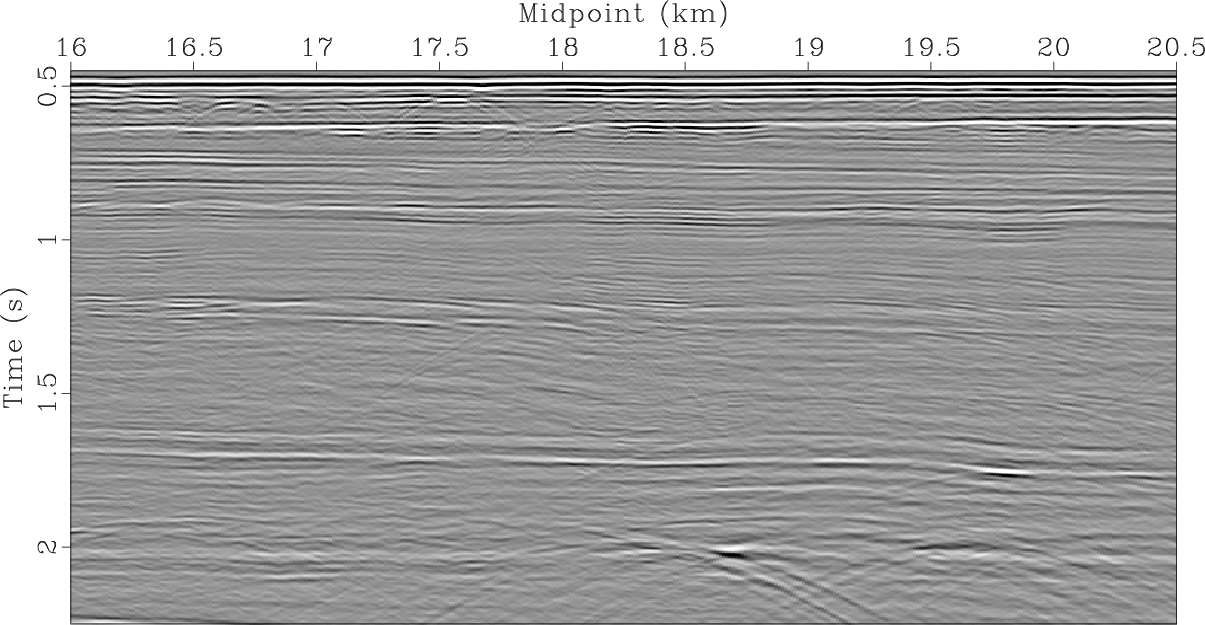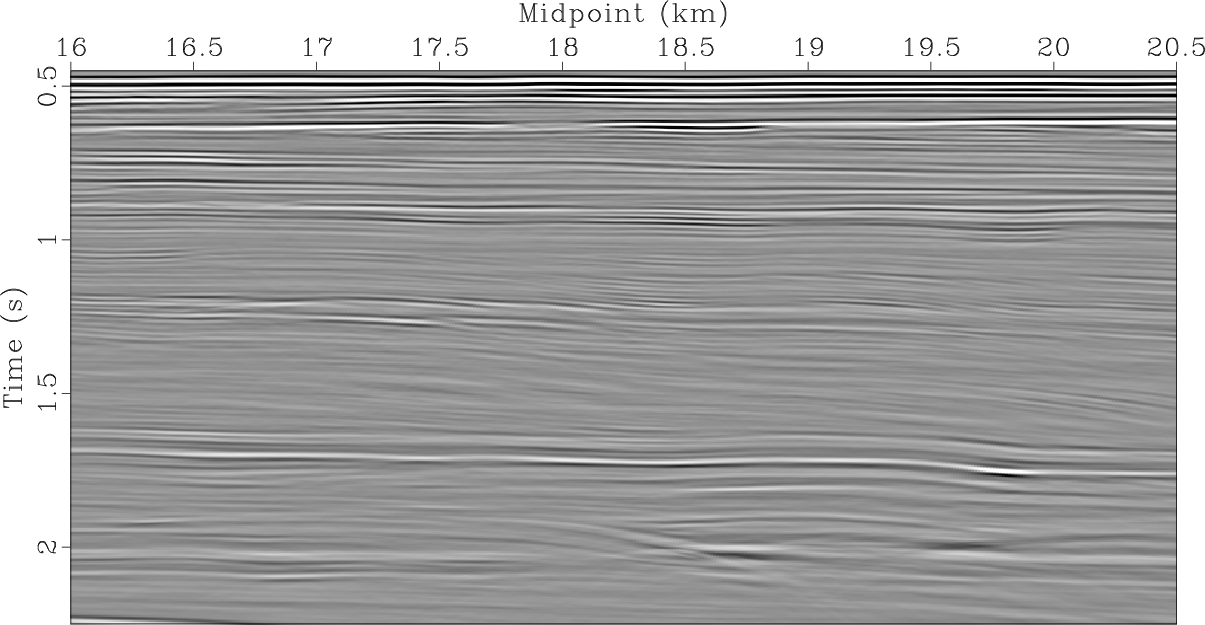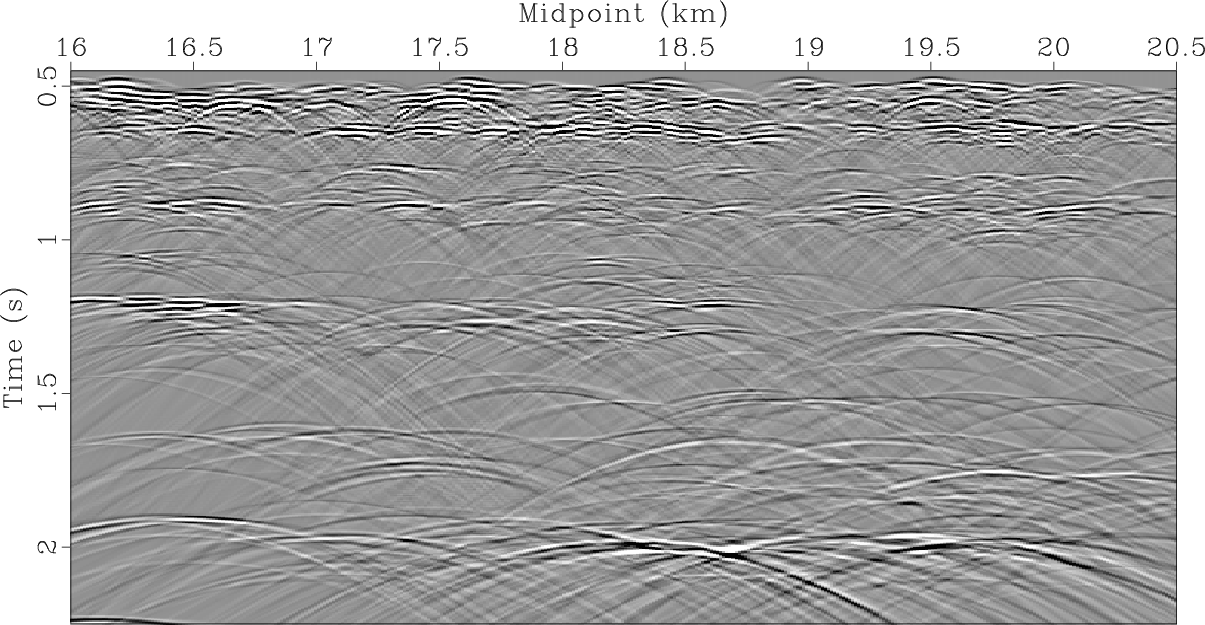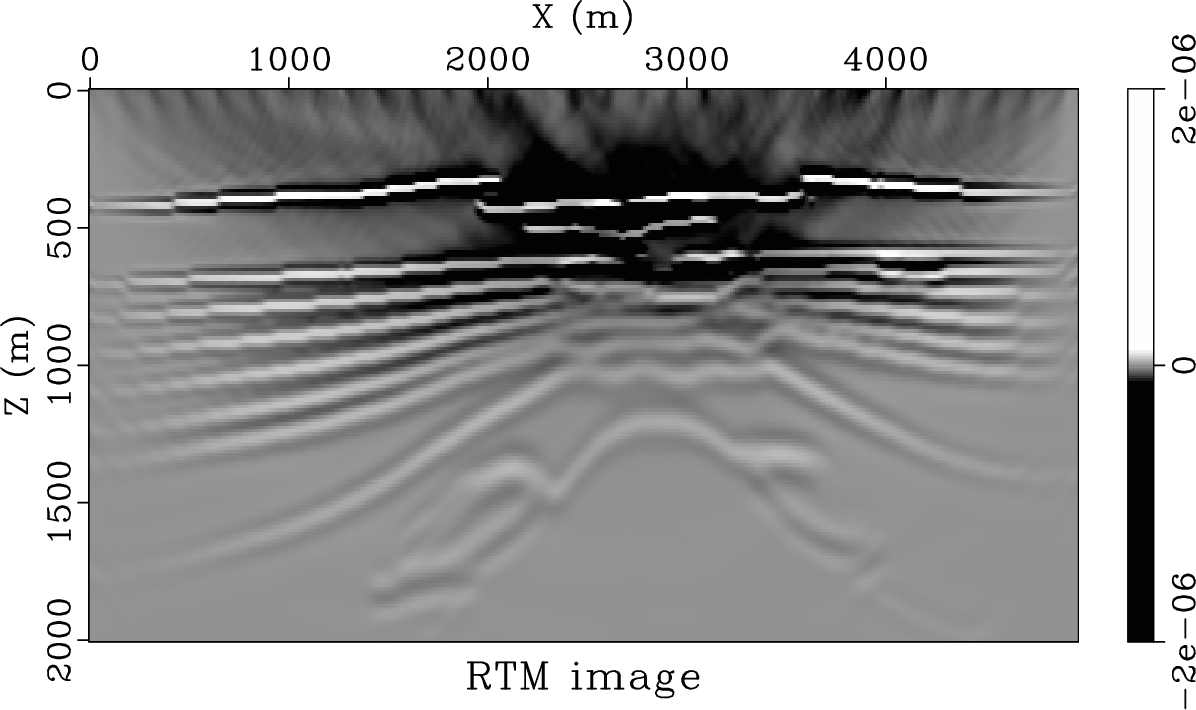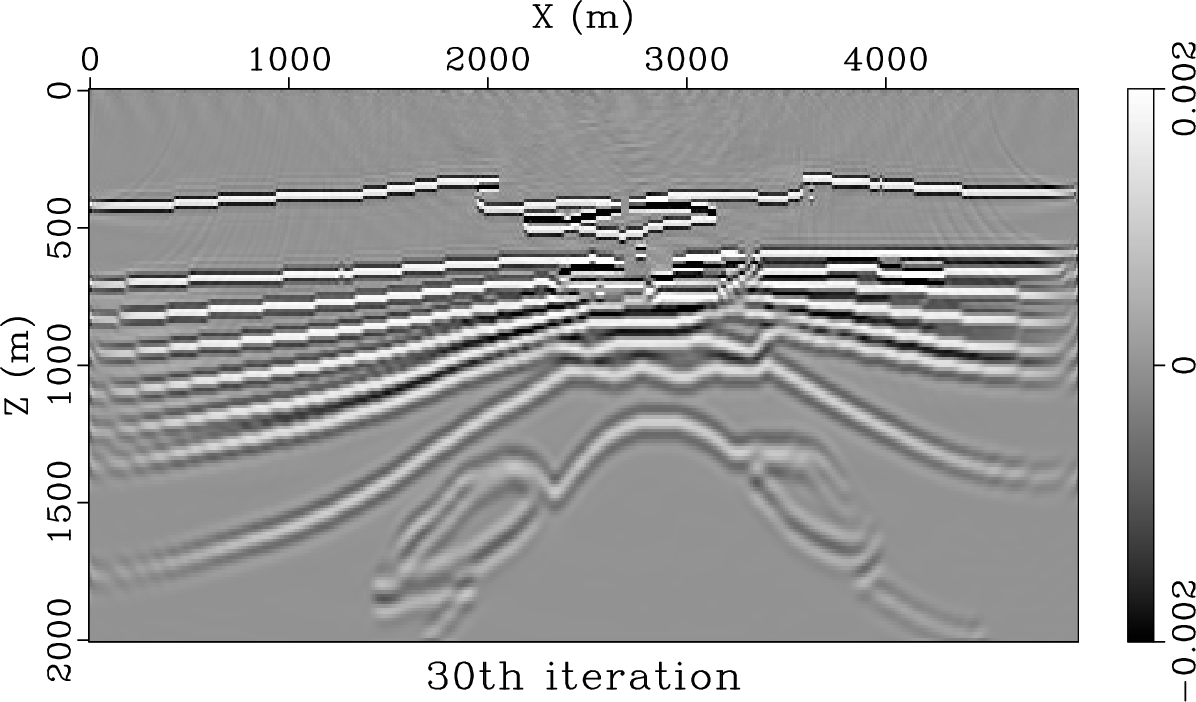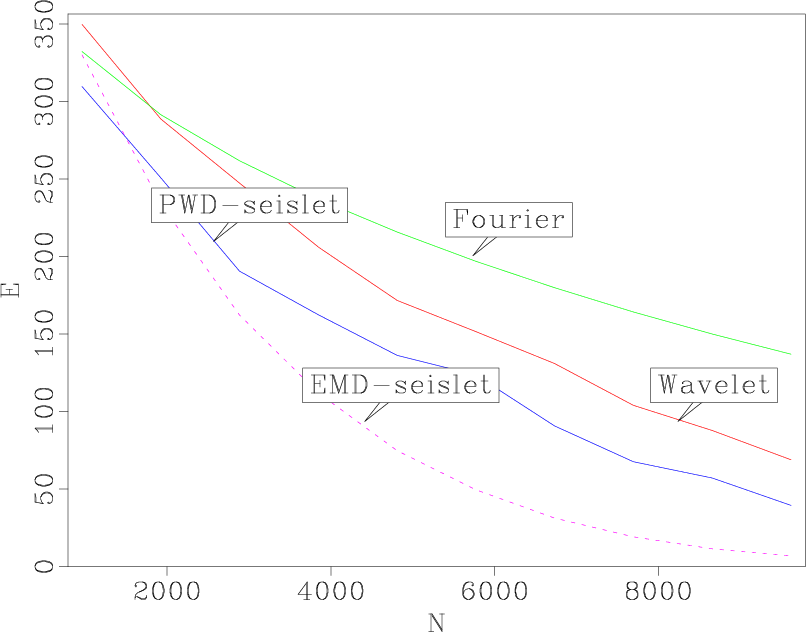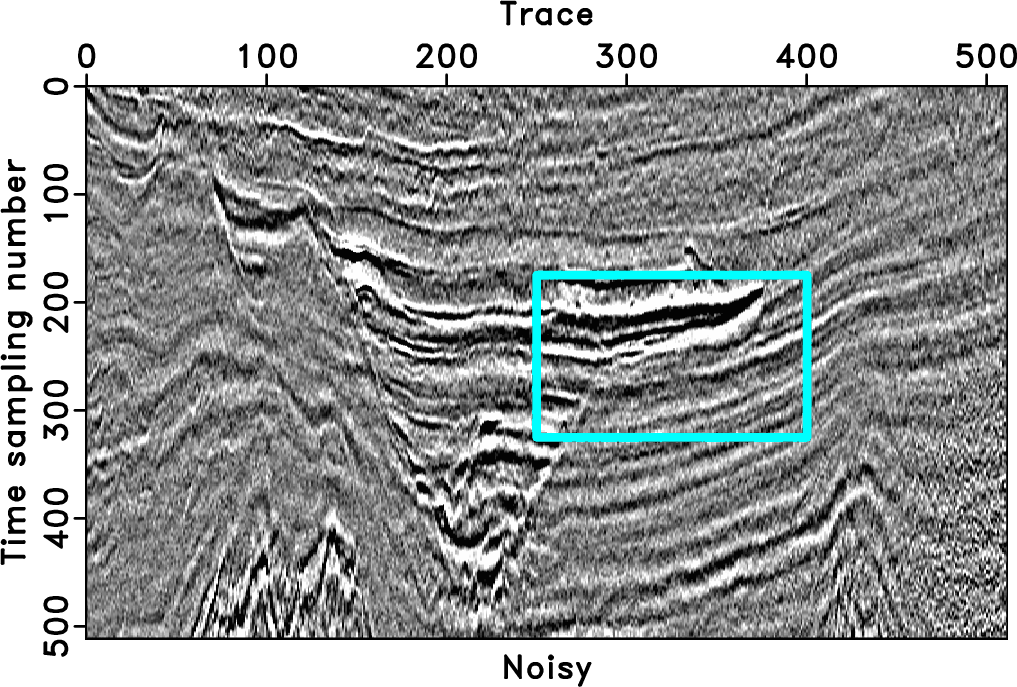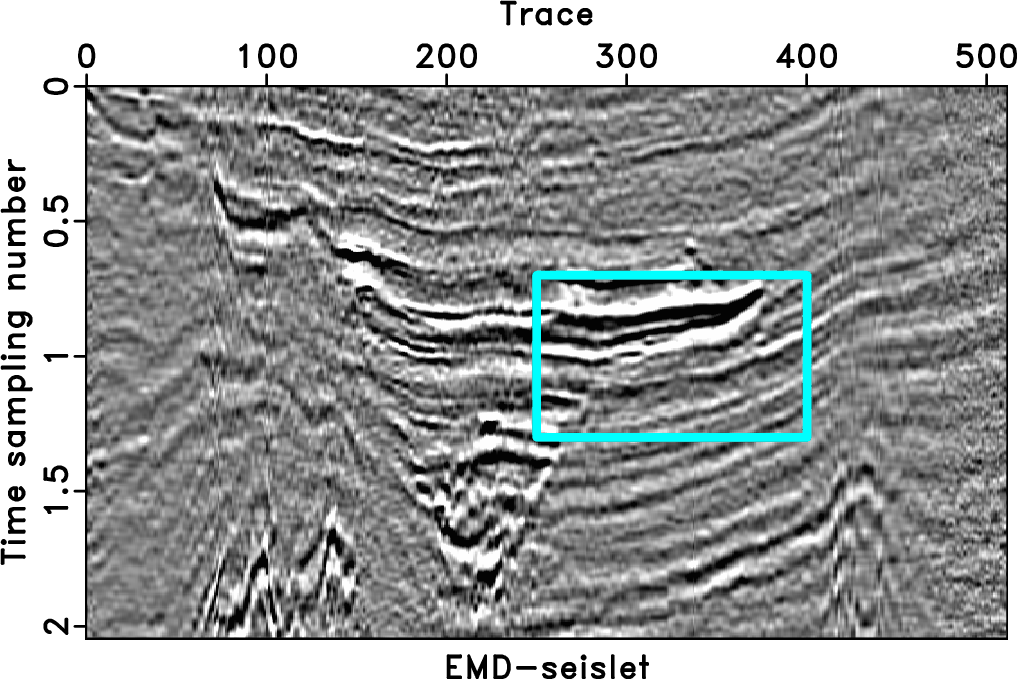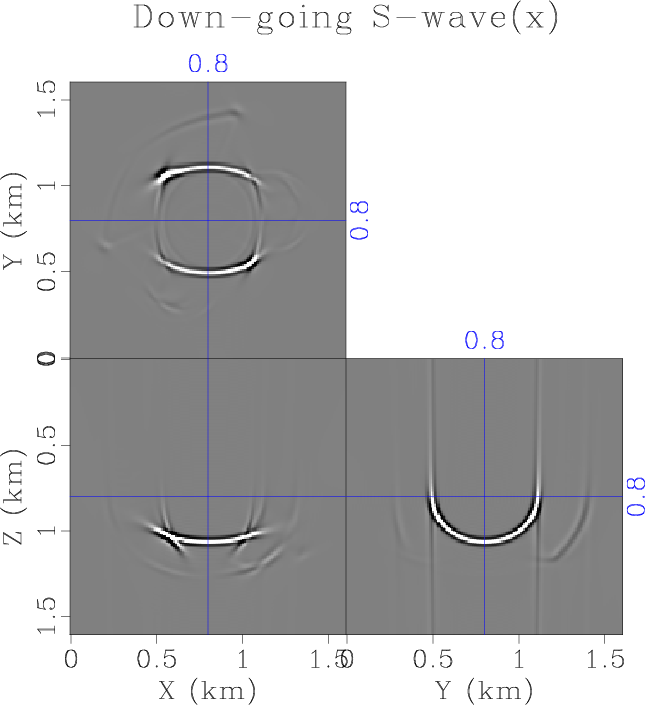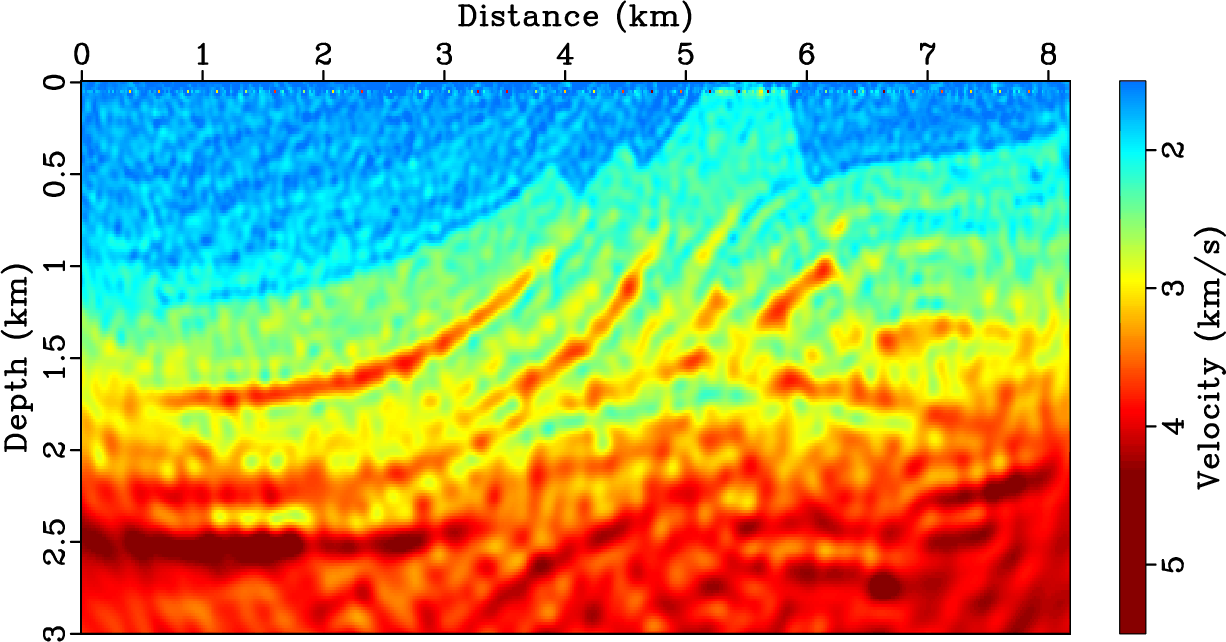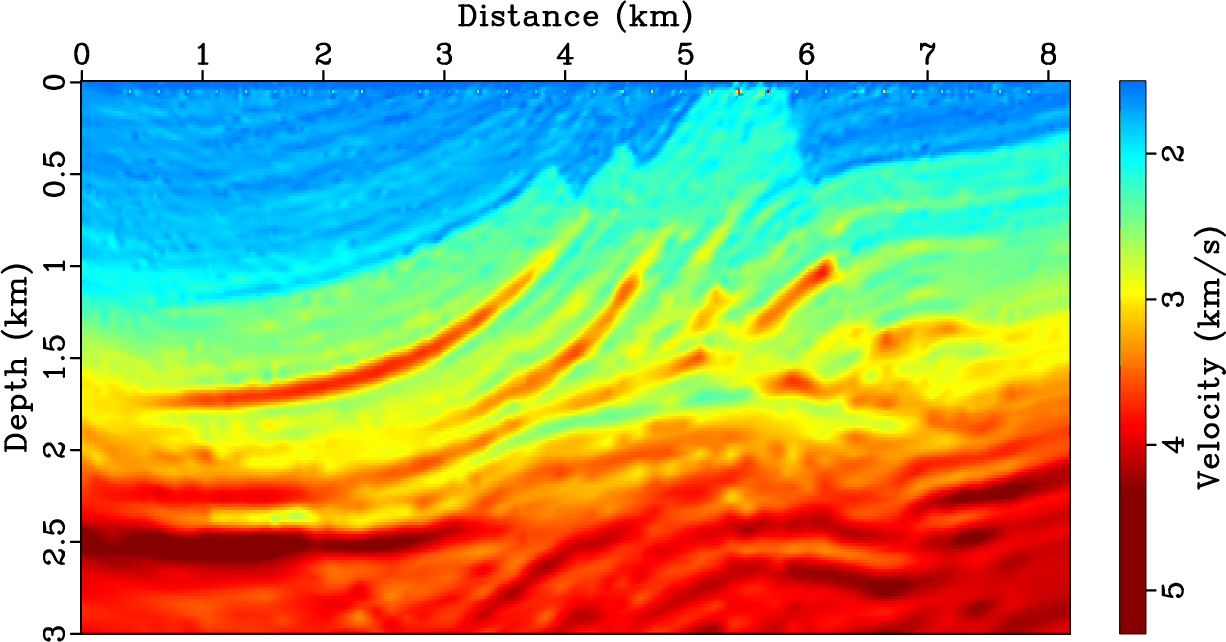A new paper is added to the collection of reproducible documents: Seismic data interpolation using generalised velocity-dependent seislet transform

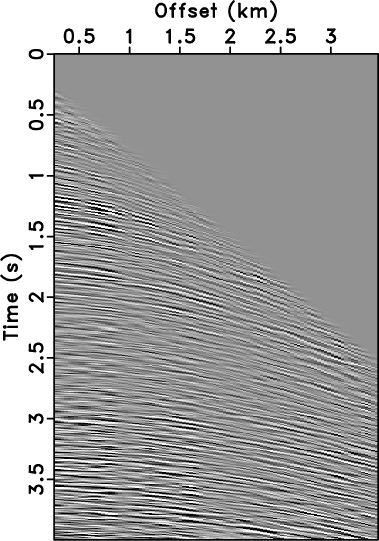
Data interpolation is an important step for seismic data analysis because many processing tasks, such as multiple attenuation and migration, are based on regularly sampled seismic data. Failed interpolations may introduce artifacts and eventually lead to inaccurate final processing results. In this paper, we generalize seismic data interpolation as a basis pursuit problem and propose an iteration framework for recovering missing data. The method is based on nonlinear iteration and sparse transform. A modified Bregman iteration is used for solving the constrained minimization problem based on compressed sensing. The new iterative strategy guarantees fast convergence by using a fixed threshold value. We also propose a generalized velocity-dependent (VD) formulation of the seislet transform as an effective sparse transform, in which the nonhyperbolic normal moveout equation serves as a bridge between local slope patterns and moveout parameters in the common-midpoint domain. It can also be reduced to the traditional VD-seislet if special heterogeneity parameter is selected. The generalized VD-seislet transform predicts prestack reflection data in offset coordinates, which provides a high compression of reflection events. The method was applied to synthetic and field data examples and the results show that the generalized VD-seislet transform can reconstruct missing data with the help of the modified Bregman iteration even for nonhyperbolic reflections under complex conditions, such as VTI media or aliasing.
